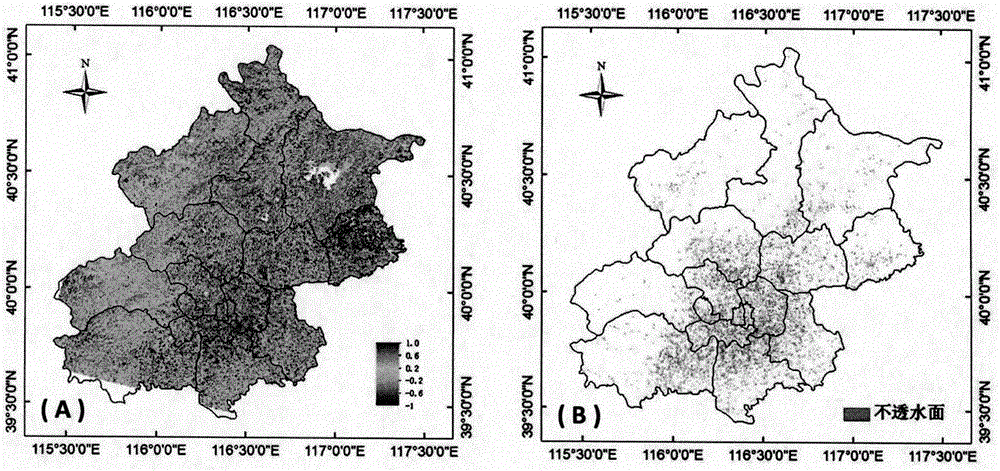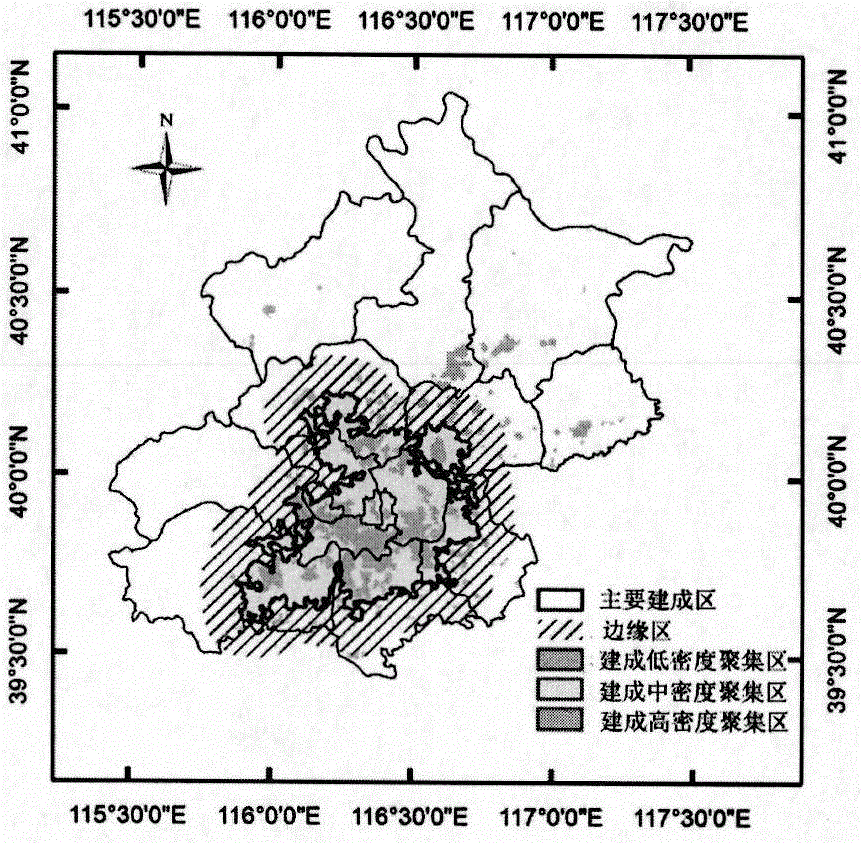Urban main built-up area remote sensing extraction method based on impervious surface aggregation density
A technology of aggregation density and extraction method, which is applied in the field of remote sensing extraction of main urban built-up areas based on the aggregation density of impermeable surfaces, can solve the problems that the integrity of the underlying surface type cannot be guaranteed, and achieve good input and support, and ensure integrity Effect
- Summary
- Abstract
- Description
- Claims
- Application Information
AI Technical Summary
Problems solved by technology
Method used
Image
Examples
Embodiment Construction
[0026] The "A method for extracting main urban built-up areas based on the density of impermeable surfaces" of the present invention will be further elaborated below in conjunction with the accompanying drawings.
[0027] The "calculation method for the accumulation density of impermeable surfaces" involved in the present invention is an important technical innovation for measuring the degree of aggregation of urban impermeable surfaces. Among them, based on the calculation of the accumulation density of impervious surfaces, the effective scope of the main urban built-up area can be obtained, which provides accurate input of urban and suburban boundaries for the calculation of heat island intensity.
[0028] (1) Extraction of impervious surface information based on BCI index
[0029] Before calculating the BCI index, it is necessary to carry out three steps of preprocessing on the remote sensing image: the first is radiometric calibration; the second is water body mask; the th...
PUM
 Login to View More
Login to View More Abstract
Description
Claims
Application Information
 Login to View More
Login to View More - R&D
- Intellectual Property
- Life Sciences
- Materials
- Tech Scout
- Unparalleled Data Quality
- Higher Quality Content
- 60% Fewer Hallucinations
Browse by: Latest US Patents, China's latest patents, Technical Efficacy Thesaurus, Application Domain, Technology Topic, Popular Technical Reports.
© 2025 PatSnap. All rights reserved.Legal|Privacy policy|Modern Slavery Act Transparency Statement|Sitemap|About US| Contact US: help@patsnap.com



